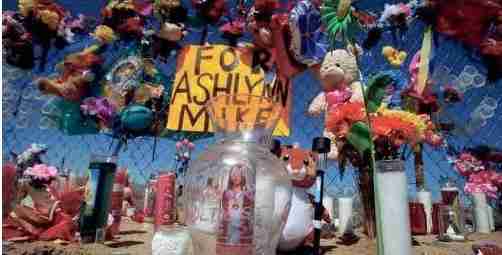Community mourns death of Ashlynne Mike
By FELICIA FONSECA and RUSSELL CONTRERAS
Associated Press
FLAGSTAFF, Ariz. – In a heinous case on the Navajo Nation, an 11-year-old girl was lured into a van, sexually assaulted and killed. The man who has admitted responsibility is not facing the death penalty – and the tribe isn’t seeking it.
American Indian tribes for decades have been able to tell federal prosecutors if they want a death sentence considered for certain crimes on their land. Nearly all have rejected that option. Tribes and legal experts say the decision goes back to culture and tradition, past treatment of American Indians and fairness in the justice system.
“Most Indian tribes were mistreated by the United States under past federal policies, and there can be historical trauma in cases associated with the execution of Native people,” said Robert Anderson, a University of Washington law professor and a member of the Bois Forte Band of the Minnesota Chippewa Tribe. “This allows tribes to at least decide in those narrow circumstances when there should be a federal death penalty or not.” In the Navajo case, Ashlynne Mike’s body wasn’t found until the next day. Her May 2016 death led to renewed discussions about capital punishment.
Ashlynne’s mother has urged the tribe to opt into the death penalty, particularly for crimes against children. The tribe long has objected to putting people to death, saying the culture teaches against taking a human life for vengeance. For years, Theda New Breast has seen the effects of domestic violence, drug addiction and poverty on her Blackfeet Reservation in Montana. The healer helps those who suffer from the associated trauma. But regardless of the crime, the 61-year-old is staunchly against capital punishment.
“Our beliefs, that I was raised with, say that no one has a right to take away a life except the Creator. Period,” New Breast said. “End of story.”
Congress expanded the list of death-penalty eligible crimes in the mid-1990s, allowing tribes to decide if they wanted their citizens subject to the death penalty. Legal experts say they are aware of only one tribe, the Sac and Fox Nation of Oklahoma, that has opted in.
Tribal leaders there hoped the decision would deter serious, violent crimes on the reservation in Oklahoma, said Truman Carter, a Sac and Fox member, attorney and tribal prosecutor. “The tribal leaders have said yes over the years, and they left it alone,” he said.
No American Indian has been executed in any case from the Sac and Fox reservation.
TRIBES HAVE NO SAY
Still, the ability of tribes to decide on the death penalty doesn’t completely exempt Native Americans from federal death row. According to the NAACP Legal Defense and Education Fund, Inc., 16 Native Americans have been executed since capital punishment was reinstated in 1976. The executions were for crimes occurring off tribal land or in the handful of states where the federal government does not have jurisdiction over major crimes on reservations.
That was the case earlier this year when a California jury imposed the death penalty for Cherie Rhoades. The former leader of the Cedarville Rancheria Tribe was convicted of fatally shooting four people and trying to kill two others.
Modac County District Attorney Jordan Funk said he didn’t consult with the tribe and wasn’t required to before deciding to pursue the death penalty. He said Rhoades expressed no remorse for the killings at a tribal meeting where officials were considering her eviction from the tribe. “If they would have told me they don’t want us to execute her, I would have done it anyway,” Funk said.
Tribes also don’t have a say over the death penalty when certain federal crimes like carjacking or kidnapping resulting in death, or killing a federal officer occurs on reservation land. Those carry a possible death sentence no matter where they happen.
That’s how Lezmond Mitchell, a Navajo man, became the only American Indian now on federal death row. He was convicted in a 2001 case of killing a fellow tribal member and her 9-year-old granddaughter. Their beheaded, mutilated bodies were found in a shallow grave on the reservation.













No Comment